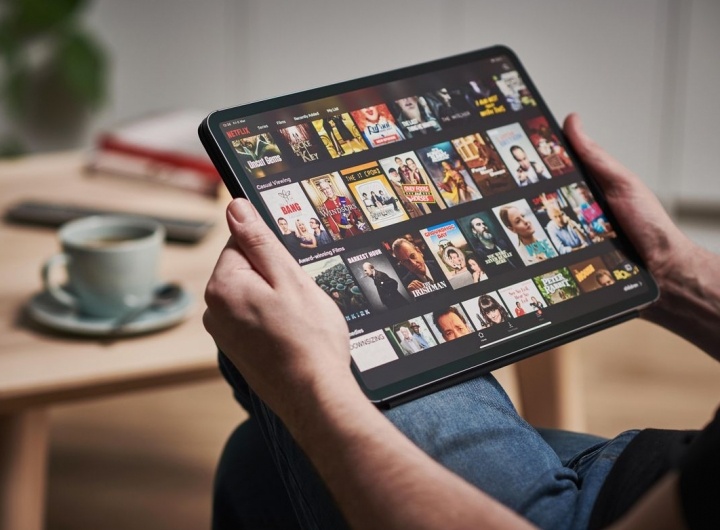Assetflix

September 3, 2020 by Anouk van Otterlo
What has my work as a BIM & Linked Data consultant to do with Netflix? Besides the fact that I quite like watching movies and series, there isn't any connection ... or is there?
The power of Netflix
You know the drill: You're sitting on the couch, there's nothing on TV as usual, and you feel like watching a movie. You turn on Netflix and see a whole bunch of suggestions. At the top, you see the series you are already following and of which a new episode is available. Below are the movies with the same theme and genre as the previous movie you watched, and if you go down again, there will be many other suggestions that also suit you.
I am really addicted to Netflix series, so I always see plenty of suggestions right up my alley. Within minutes I choose the series I want to watch. With a bag of chips, I lie down on the couch to be entertained for the next hour. After finishing the series, I am confronted with the most tempting moment, the real power of Netflix. I know I should do something else or maybe really go to bed. But there is another suggestion, and if I do not close Netflix quickly, the next episode already starts! Okay, one more then ...
Big brother is watching you
Netflix has become incredibly popular in recent years, and the number of users has grown significantly. With its platform, Netflix wants to make it as easy as possible for you by providing suggestions based on viewing behavior so that you can decide without too much effort and as quickly as possible.
So, Netflix is basically one extensive database with many different movies and series, categorized by genres, protagonists, and other features that describe the movie or series. Using algorithms and based on your viewing history, Netflix gives many viewing suggestions the moment you launch it. The more often you watch, the better the predictions are based on your recent viewing habits. Netflix keeps track of what you watch, how you watch it (i.e., on what device) when you watch it, and what you do not watch. In short: big brother is watching you.
Linked Data vs. Netflix
I don't want my clients to choose a film or series as quickly as possible in my work. I want to provide digital insight into the data of their buildings and assets based on certain features, such as year of construction, date of the last maintenance, or the location of the asset. So that they can generate predictions and suggestions based on the correct data. Think about when an asset needs to be maintained because there is a high probability that it will break down soon. Or, when maintenance is scheduled for a particular asset, the system can indicate that other assets of the same type are nearby and can be included in the maintenance. The customer can use these suggestions to make the right decisions for the future. This gives the customer more control over the data. The new insights gained from digitization increase predictability, resulting in not only better but also cost-reducing decisions.
Using Linked Data, you can set up your own Netflix. But in your Netflix, not movies and series are shown, but all assets from one or more buildings. Instead of being organized by features, genres, and protagonists, the assets are classified by common names, characteristics, and attributes of buildings and assets. Such a structure can very well be set up using the technology 'Linked Data.' Linked Data ensures that you can unambiguously structure data. You bring cohesion to the information with Linked Data. This is not the same technology used for Netflix, but the principle is similar. Linked Data has been used more and more recently in the construction, civil, and management industries. It is a technology that works well to describe all the different and fragmented information in a unified way. Because Linked Data is being used more and more in this sector, a new standard has recently been published that endorses this (NTA-8035).
Create your own 'Assetflix'
When information is stored in a database using a Linked Data structure, predictions can be made just as they are with Netflix. In this case, suggestions are not made that provide predictions based on viewing history but based on historical data of assets. Optionally, business rules can be added to the data structure that support prediction. The more historical data and business rules are known, the better the suggestions the system can make. A customer can base its choices regarding these predictions, such as when an asset needs maintenance. In this way, the system aims to provide the customer with insights as quickly as possible, making it easier to make choices for the future. Just as Netflix aims to make it easier for customers to choose a movie or series as quickly as possible.
With the help of Linked Data and the correct database, you too can organize your own 'Netflix environment' in the future. Of course, not all your future choices regarding assets will be based on the Linked Data databases' suggestions, but then again, you don't always choose one of the movies selected for you on Netflix. The choice, however, will be made a lot easier by this new environment.
Want to know more about Linked Data?
Are you interested in the possibilities of Linked Data and asset management for your organization? Then get in touch with me. I'd be happy to show you all the possibilities.

